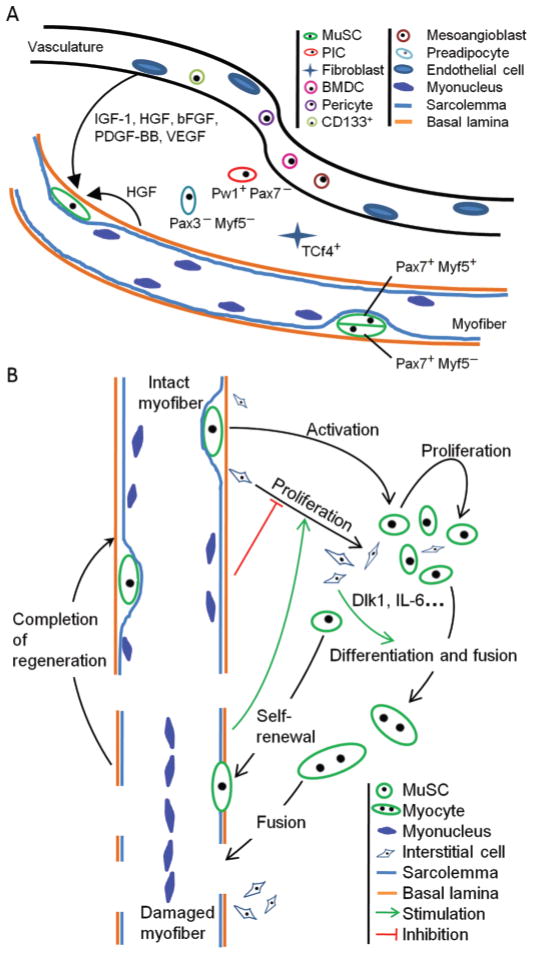Figure 1.
Panel A: cellular and molecular components of the muscle satellite cell (MuSC) niche. MuSC, including Pax7+Myf5− and Pax7+Myf5+ cells that generated from asymmetrical cell division, are regulated by various growth factors. These mainly include IGF-1, hepatocyte growth factor (HGF), basic fibroblast growth factor (bFGF), platelet-derived growth factor-BB (PDGF-BB), and vascular endothelial growth factor (VEGF). The physical and cellular components of MuSC niche include basal lamina, host myofiber, interstitial fibroblasts (transcriptional factor 4 positive cells, Tcf4+), preadipocytes (Pax3−/Myf5−), and vasculature. Other muscle resident stem cell types (Pw1+/Pax7− PIC, CD133+ cell, mesoangioblast, pericyte, bone marrow-derived cell, BMDC) may interact with or give rise to MuSC. Panel B: regulation of MuSC fate choices by cues present in the niche. Signals from resting muscle inhibit the expansion of interstitial cells, including preadipocytes and fibroblasts, whereas cues from regenerating muscle promote proliferation of interstitial cells. During muscle regeneration, interstitial cells may provide physical and chemical cues [e.g., delta-like 1 homolog (Dlk1) and IL-6] that facilitate myogenic differentiation. Pax3/7: paired box 3/7; Myf5: myogenic factor 5; PIC: Pw1 (paternally expressed 3) positive interstitial cells. Color version available in the online PDF.

